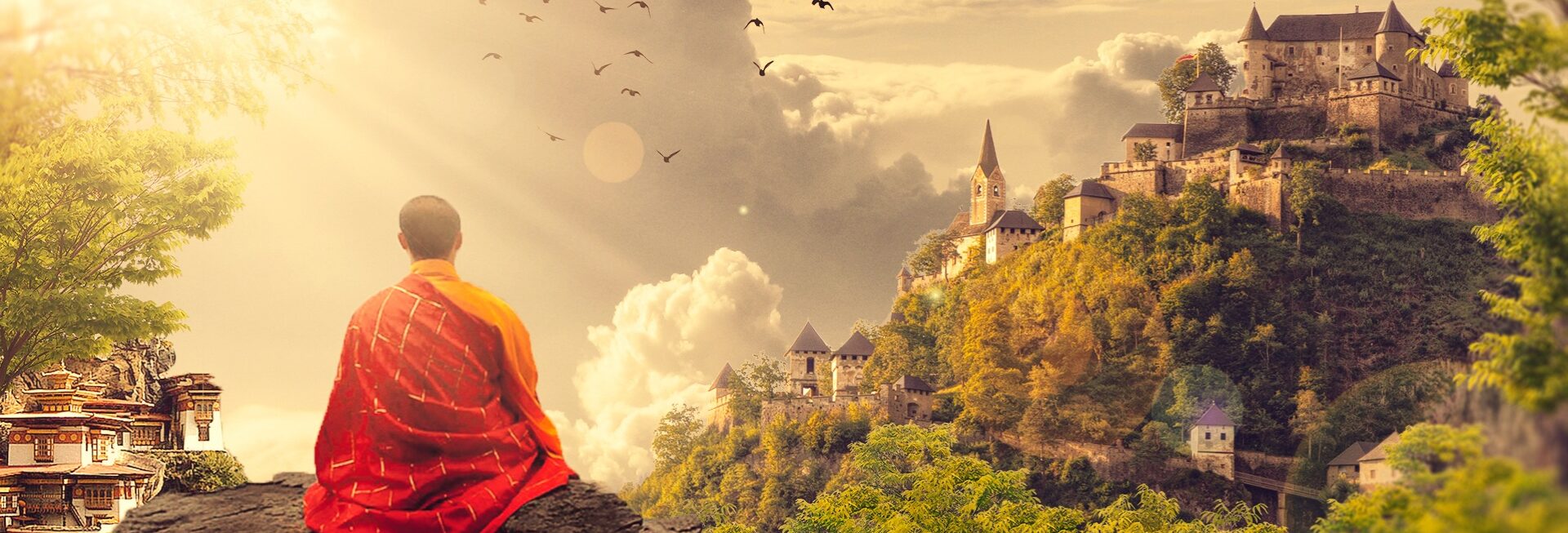Buddhism is an ancient Indian religion, which arose in and around the ancient Kingdom of Magadha (now in Bihar, India). It is based on the teachings of Gautama Buddha[note 1], who lived in the 6th or 5th century BCE and was deemed a “Buddha” (“Awakened One”[3]). However, Buddhist doctrine holds that there were other Buddhas before him. Buddhism spread outside of Magadha starting in the Buddha’s lifetime.
During the reign of the Mauryan Emperor Ashoka, the Buddhist community split into two branches: the Mahāsāṃghika and the Sthaviravāda, each of which spread throughout India and split into numerous sub-sects.[4] In modern times, two major branches of Buddhism exist: the Theravada in Sri Lanka and Southeast Asia, and the Mahayana throughout the Himalayas and East Asia. The Buddhist tradition of Vajrayana is sometimes classified as a part of Mahayana Buddhism, but some scholars consider it to be a different branch altogether.[5]
The practice of Buddhism lost influence in India around the 7th century CE, after the collapse of the Gupta Empire. The last large state to support Buddhism—the Pala Empire—fell in the 12th century. By the end of the 12th century, Buddhism had largely disappeared from India with the exception of the Himalayan region and isolated remnants in parts of south India. However, since the 19th century, modern revivals of Buddhism have included the Maha Bodhi Society, the Vipassana movement, and the Dalit Buddhist movement spearheaded by B. R. Ambedkar. There has also been a growth in Tibetan Buddhism with the arrival of Tibetan refugees and the Tibetan government in exile to India, following the Chinese occupation of Tibet in 1950.[6] According to the 2011 Census there are 8.4 million Buddhists in India (0.70% of the total population).
